Standard [CURRENT]
ASTM E 3500:2025
Standard Practice for Quality Control of Routine Testing in a Laboratory
- Publication date
- 2025
- Original language
- English
- Pages
- 8
- Publication date
- 2025
- Original language
- English
- Pages
- 8
- DOI
- https://dx.doi.org/10.1520/E3500-25
Product information on this site:
Quick delivery via download or delivery service
Buy securely with a credit card or pay upon receipt of invoice
All transactions are encrypted
Short description
1.1 This practice describes quality control programs to monitor and maintain test method performance in a single laboratory conducting a test method on a routine basis. It is applicable when a control sample material is routinely run with samples for the purpose of monitoring test method performance. Guidance is given for quality control of test method performance characteristics such as test method bias, stability, and laboratory precision (long-term single facility intermediate precision) using a control sample program. The information from this program applies only to test results generated by that laboratory and is valid only for the material type and measured property level represented by the control sample. 1.2 The system of units for this standard is not specified. Dimensional quantities in the standard are presented only as illustrations of calculation methods. The examples are not binding on products or test methods treated. 1.3 This standard does not purport to address all of the safety concerns, if any, associated with its use. It is the responsibility of the user of this standard to establish appropriate safety, health, and environmental practices and determine the applicability of regulatory limitations prior to use. 1.4 This international standard was developed in accordance with internationally recognized principles on standardization established in the Decision on Principles for the Development of International Standards, Guides and Recommendations issued by the World Trade Organization Technical Barriers to Trade (TBT) Committee.
ICS
03.120.10,
11.100.99
DOI
https://dx.doi.org/10.1520/E3500-25
Also available in
Loading recommended items...
Loading recommended items...
Loading recommended items...
Loading recommended items...

